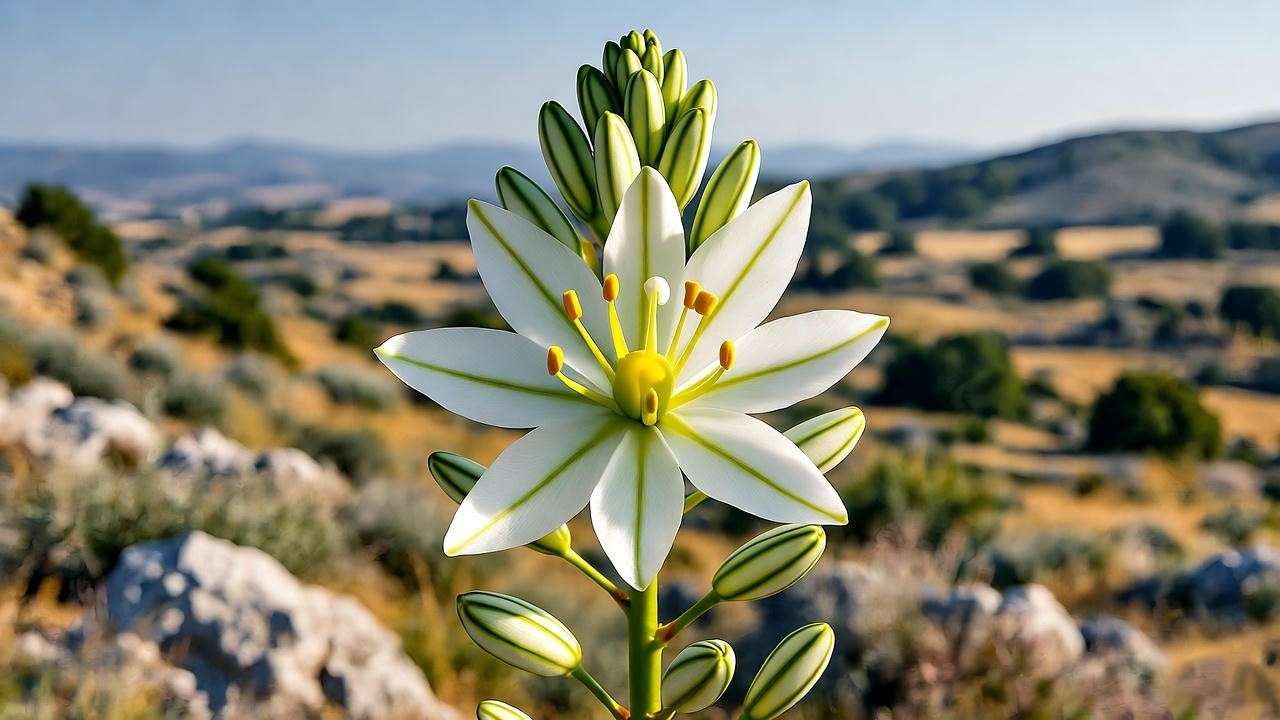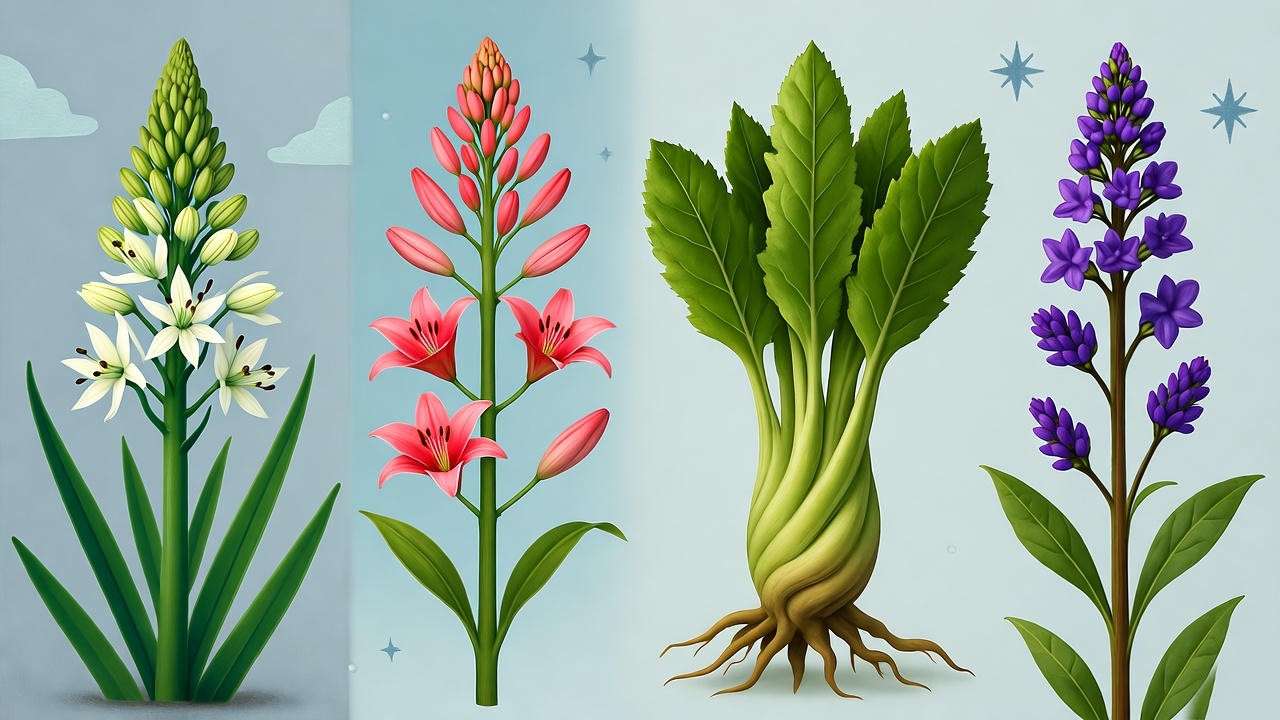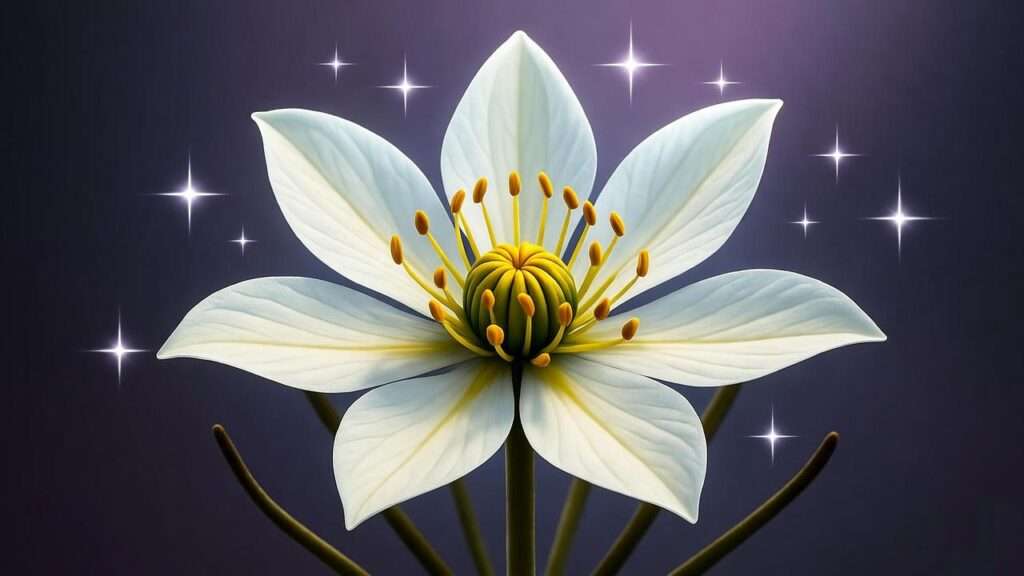Imagine sitting in Professor Snape’s dimly lit potions classroom, the air thick with tension as he poses a cryptic question: “What would I get if I added powdered root of asphodel to an infusion of wormwood?” For Harry Potter fans, this moment in Harry Potter and the Philosopher’s Stone sparks curiosity about the asphodel meaning flower—a plant steeped in mystery and symbolism. Why did J.K. Rowling choose this flower for such a pivotal scene? What deeper truths does it reveal about the wizarding world? This article dives into the asphodel’s botanical roots, mythological significance, magical properties, and its profound connections to the series’ themes of life, death, and redemption. As a lifelong Harry Potter scholar with a passion for Rowling’s intricate storytelling, I’ll uncover exclusive insights to satisfy fans and deepen your appreciation of the series’ hidden layers.
What Is Asphodel? A Botanical and Magical Overview
The Asphodel Flower in the Real World
The asphodel, scientifically known as Asphodelus, is a perennial plant native to the Mediterranean, characterized by its tall, slender stems and star-shaped white or yellow flowers. Often found in rocky fields, it thrives in harsh conditions, symbolizing resilience. Historically, ancient Greeks planted asphodel near graves, associating it with the afterlife due to its enduring blooms. According to Dr. Maria Papadopoulos, a botanist specializing in Mediterranean flora, “Asphodel’s hardiness and ethereal beauty made it a fitting emblem for eternal rest in ancient cultures.” Its roots were also used in traditional medicine and as a food source in times of scarcity, showcasing its practical versatility.

Asphodel in the Wizarding World
In the Harry Potter universe, asphodel takes on a magical aura, most notably as a key ingredient in the Draught of Living Death, a potion introduced in Harry Potter and the Philosopher’s Stone. During Snape’s infamous potions quiz, he challenges Harry with a question about asphodel and wormwood, hinting at their combined significance. According to Pottermore, asphodel’s powdered root is a rare and potent ingredient, valued for its ability to induce a death-like sleep. Its scarcity in the wizarding world underscores its importance, making it a staple in advanced potion-making. This connection to Snape’s classroom sets the stage for exploring asphodel’s deeper symbolic role.
The Asphodel Meaning Flower: Symbolism and Mythology
Asphodel in Ancient Mythology
The asphodel flower’s symbolism stretches back to ancient Greece, where it was intricately tied to the underworld. In Homer’s Odyssey, the Asphodel Meadows is described as a resting place for ordinary souls in the afterlife—a realm neither paradise nor punishment, but a liminal space of eternal twilight. Dr. Helen Stavros, a classicist at Oxford University, notes, “Asphodel’s association with the dead reflects its role as a bridge between life and eternity, a symbol of remembrance.” This mythological backdrop enriches its use in Harry Potter, where themes of mortality and memory are central.

J.K. Rowling’s Symbolic Use of Asphodel
J.K. Rowling, known for her meticulous research, weaves asphodel’s mythological roots into the Harry Potter narrative with precision. The flower’s mention in Snape’s question to Harry is no coincidence. When paired with wormwood, which symbolizes bitterness and regret, asphodel forms a poetic code: “I bitterly regret Lily’s death.” This hidden message, revealed years later by Rowling, ties directly to Snape’s unrequited love for Lily Potter and his lifelong remorse. The asphodel meaning flower thus becomes a poignant symbol of love, loss, and redemption, mirroring the series’ emotional core. Rowling’s use of plant symbolism, seen also in lilies and mandrakes, elevates her storytelling, inviting fans to uncover these hidden layers.
Asphodel in Potion-Making: Magical Properties and Uses
The Draught of Living Death
The Draught of Living Death, a potion so powerful it induces a sleep indistinguishable from death, relies heavily on asphodel’s unique properties. According to The Standard Book of Spells, the potion requires precise measurements of powdered asphodel root, blended with wormwood and other rare ingredients. The process is complex: the asphodel must be ground to a fine powder and added at a specific stage to ensure the potion’s potency. Its ability to mimic death aligns with asphodel’s mythological ties, making it a perfect ingredient for this advanced brew. Snape’s expertise in potions underscores his fascination with asphodel, reflecting his own complex relationship with life and death.
Other Potential Uses in the Wizarding World
While the Draught of Living Death is asphodel’s most famous application, its properties suggest broader uses in the wizarding world. Its association with sleep and the afterlife hints at potential roles in healing potions, such as those for calming severe trauma or inducing restorative trances. Herbologists in the Harry Potter universe might also use asphodel in protective charms, given its resilience. For fans hosting Harry Potter-themed events, a safe, real-world substitute like chamomile can mimic asphodel’s calming effects in mock potions. Tip: Create a “potion” for cosplay by mixing chamomile tea with edible glitter for a magical, asphodel-inspired brew!
Why Asphodel Resonates with Harry Potter Fans
Emotional Connections to the Series’ Themes
Asphodel’s symbolism strikes a chord with Harry Potter fans because it encapsulates the series’ exploration of love, sacrifice, and mortality. Snape’s use of asphodel in his quiz subtly foreshadows his tragic arc, revealed in Harry Potter and the Deathly Hallows with the iconic “Always” moment. Fans on X have shared heartfelt reflections, with one user noting, “Asphodel in Snape’s question hit me hard—it’s like he was confessing his pain from the start.” This emotional depth makes asphodel a touchstone for fans grappling with the series’ heavier themes, offering a lens to explore grief and redemption.

Asphodel in Fan Culture and Fandom
Beyond the books, asphodel has blossomed in Harry Potter fandom. Fanfiction writers often incorporate the flower into stories about Snape or themes of loss, using it as a metaphor for unspoken love. Artists depict asphodel in ethereal illustrations, with its delicate blooms adorning wands or potions. At conventions like LeakyCon, fans showcase asphodel-inspired jewelry, such as necklaces featuring pressed white flowers. Call-to-Action: Share your own asphodel-inspired creations in the comments below, or tag us on X to join the conversation about magical plants in Harry Potter!

Comparing Asphodel to Other Magical Plants in Harry Potter
Asphodel vs. Lily: A Study in Symbolism
The asphodel meaning flower gains deeper significance when compared to another iconic plant in the Harry Potter series: the lily. While asphodel is tied to death and remembrance, the lily—named after Lily Potter—symbolizes love, purity, and protection. This contrast is particularly poignant in the context of Severus Snape’s story. His Patronus, a doe matching Lily’s, reflects her enduring influence, while his use of asphodel in the potions quiz hints at his regret over her death. J.K. Rowling’s deliberate pairing of these plants underscores the tension between love and loss in Snape’s arc, making asphodel a darker counterpoint to the lily’s light. This interplay enriches the series’ emotional landscape, offering fans a nuanced lens to explore character motivations.
Other Notable Plants and Their Meanings
Asphodel is just one of many magical plants in the Harry Potter universe, each with unique symbolic roles. For instance, the mandrake, known for its restorative properties, symbolizes rebirth and healing, as seen in Harry Potter and the Chamber of Secrets when it revives petrified victims. Gillyweed, used by Harry in Harry Potter and the Goblet of Fire, represents adaptability, enabling transformation in challenging environments. Dittany, a powerful healing herb, signifies recovery and resilience, notably used to heal Ron’s splinching injury in Harry Potter and the Deathly Hallows. Below is a quick reference table summarizing these plants:
| Plant | Magical Property | Symbolic Meaning |
|---|---|---|
| Asphodel | Induces death-like sleep | Death, remembrance, regret |
| Lily | Enhances protective charms | Love, purity, protection |
| Mandrake | Restores petrified or unconscious | Rebirth, healing |
| Gillyweed | Grants underwater breathing | Adaptability, transformation |
| Dittany | Heals wounds | Recovery, resilience |
This comparison highlights Rowling’s masterful use of botanical symbolism to mirror the series’ themes and character journeys, with asphodel standing out for its somber resonance.

How to Incorporate Asphodel’s Symbolism into Your Harry Potter Experience
For Writers and Creators
Asphodel’s rich symbolism offers endless inspiration for Harry Potter fans who create fanfiction, art, or cosplay. For fanfiction writers, consider using asphodel as a motif in stories exploring grief or redemption. For example, a tale about a potions master grappling with loss could feature asphodel as a recurring symbol, echoing Snape’s journey. Artists can depict asphodel in ethereal watercolors, with its white blooms glowing against a dark, potions-laden backdrop. Cosplayers might incorporate asphodel into costumes by crafting floral crowns or embroidering the flower onto robes. Tip: Use real-world white flowers like baby’s breath to mimic asphodel in cosplay, ensuring a delicate, magical aesthetic.

For Educators and Book Clubs
Asphodel’s layered meaning makes it a perfect topic for literature classes or Harry Potter book clubs. Educators can use it to spark discussions about symbolism in storytelling. Try this discussion prompt: “How does Rowling’s use of asphodel in Snape’s potions quiz foreshadow his character arc?” For book clubs, organize an activity where members research a magical plant and present its real-world and wizarding significance. To enhance engagement, download our free PDF guide, “Exploring Magical Plants in Harry Potter,” featuring asphodel-themed discussion questions and creative writing prompts. This resource, available via our blog, helps fans and educators dive deeper into Rowling’s world.

FAQs About Asphodel in Harry Potter
What does asphodel symbolize in Harry Potter?
Asphodel symbolizes death, remembrance, and regret, particularly in Snape’s potions quiz, where it subtly conveys his remorse over Lily Potter’s death. Its mythological roots in the Greek underworld amplify its somber significance.
Why is asphodel used in the Draught of Living Death?
Asphodel’s powdered root is a key ingredient due to its ability to induce a death-like sleep, aligning with its mythological ties to the afterlife and its potent magical properties.
Is asphodel a real plant, and can I grow it?
Yes, asphodel is a real Mediterranean plant (Asphodelus). It thrives in sunny, well-drained soil and can be grown in gardens, though it requires care due to its specific climate needs.
How does asphodel connect to Snape’s character arc?
Asphodel’s use in Snape’s quiz hints at his regret over Lily’s death, forming a coded message with wormwood. This foreshadows his redemptive journey, revealed in Harry Potter and the Deathly Hallows.
Are there other Harry Potter plants with similar symbolism?
Plants like the lily (love, protection) and mandrake (rebirth) share symbolic depth but differ in tone. Asphodel’s focus on death and regret makes it uniquely poignant.
The asphodel meaning flower weaves a thread of profound symbolism through the Harry Potter series, connecting ancient mythology to the wizarding world’s themes of love, loss, and redemption. From its role in the Draught of Living Death to its emotional resonance in Snape’s story, asphodel captivates fans with its hidden depths. Whether you’re a fanfiction writer, a cosplayer, or a book club enthusiast, asphodel offers endless ways to enrich your Harry Potter experience. Explore more magical plant symbolism on our blog, and share your thoughts in the comments below! Stay tuned for our next article, “The Hidden Meanings of Mandrake in Harry Potter,” to continue your journey into Rowling’s botanical brilliance.













